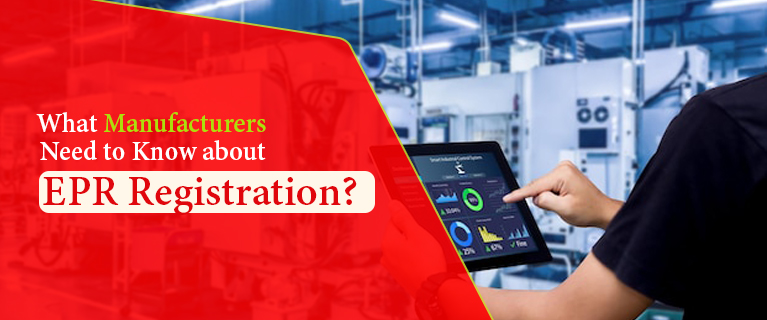The Role Of EPR Registration In Building A Circular Economy
n today's world, the concept of a circular economy has gained significant traction as a sustainable approach to resource management. Extended Producer Responsibility (EPR) registration plays a crucial role in driving the transition toward a circular economy. EPR is a policy framework that holds manufacturers responsible for the entire lifecycle of their products, including their disposal and recycling. This blog explores the essential role of EPR registration in building a circular economy, focusing on its benefits, challenges, and steps involved in implementing an effective EPR program.
1. Shifting the Burden of Waste Management
Traditionally, the burden of waste management has primarily fallen on local governments and municipalities. However, with EPR registration, the responsibility is shifted to the producers, encouraging them to take ownership of the entire lifecycle of their products. This shift ensures that producers are incentivized to design products that are easier to recycle and dispose of responsibly, reducing the environmental impact of waste.
2. Promoting Resource Conservation and Efficiency
EPR registration drives resource conservation and efficiency by encouraging manufacturers to use sustainable materials, optimize production processes, and minimize waste generation. Producers are motivated to adopt eco-friendly practices that promote the efficient use of resources, such as incorporating recycled content in their products, implementing energy-saving measures, and reducing packaging waste.
3. Encouraging Product Design for Recyclability
EPR registration incentivizes manufacturers to design products that are easily recyclable or can be safely disposed of without causing harm to the environment. By considering the end-of-life stage during the product design phase, producers can make informed decisions about materials, packaging, and assembly techniques to facilitate recycling and promote the use of recycled materials in new products.
4. Creating Opportunities for Recycling Industries
EPR registration stimulates the growth of recycling industries by creating a steady supply of recyclable materials. With increased collection and segregation of waste, recycling facilities can operate more efficiently, contributing to job creation, reducing reliance on raw materials, and diverting waste from landfills. EPR registration plays a crucial role in establishing a robust recycling infrastructure, ensuring the effective management of waste streams.
5. Collaboration and Stakeholder Engagement
Successful implementation of EPR registration requires collaboration among various stakeholders, including manufacturers, government agencies, waste management companies, and consumers. Engaging all relevant parties in the design and execution of EPR programs fosters transparency, accountability, and shared responsibility for waste management, promoting a holistic approach to building a circular economy.
6. Addressing the Challenges of EPR Implementation
Implementing EPR registration comes with its own set of challenges. These include defining clear regulations and guidelines, establishing monitoring and enforcement mechanisms, ensuring adequate funding for waste management infrastructure, and raising awareness among consumers about their role in waste segregation and responsible consumption. Addressing these challenges requires a comprehensive and coordinated effort among stakeholders.
Read Also This - The Economic Benefits of EPR Registration7. Case Studies and Success Stories
Highlighting successful EPR programs and case studies can inspire businesses and policymakers to adopt similar initiatives. By showcasing examples of industries that have effectively implemented EPR registration and achieved positive environmental and economic outcomes, stakeholders can gain insights into best practices, learn from real-world experiences, and replicate successful models in their respective sectors.
8. Future Directions and Innovation
EPR registration is an evolving concept, and its effectiveness can be further enhanced through continuous innovation and adaptation. Exploring emerging trends, such as the use of technology in waste management, incentivizing eco-design and eco-innovation, and exploring new recycling techniques, can pave the way for a more efficient and sustainable circular economy.
Conclusion
EPR registration plays a pivotal role in building a circular economy by shifting the responsibility of waste management to producers and promoting resource conservation, recycling, and sustainable product design. Through collaboration, stakeholder engagement, and addressing implementation challenges, EPR programs can be effectively established and scaled up. By embracing EPR registration and its principles, businesses can contribute to a more sustainable future, reduce environmental impacts, and create a circular economy that thrives on resource efficiency, waste reduction, and responsible consumption.
Read Also This - EPR Registration in the Digital Age



Comments
Post a Comment